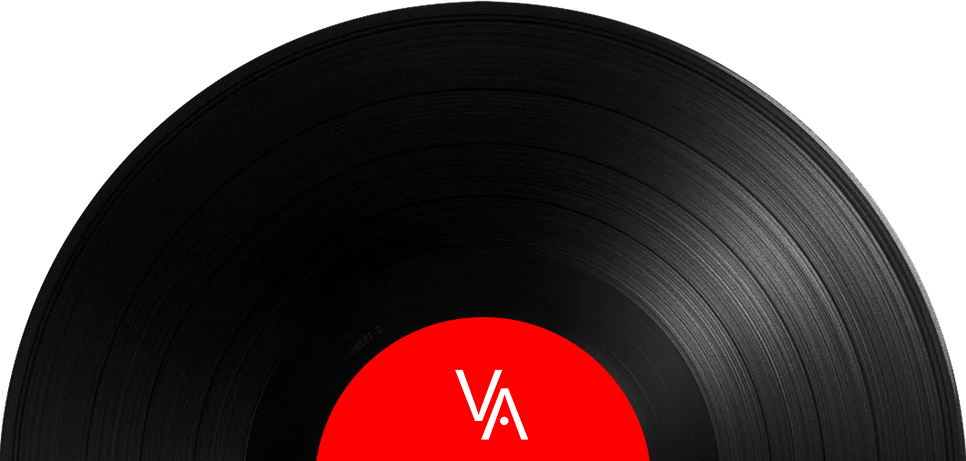
This is a 2019 Blue Note pressing - part of their Tone Poet Series - which I have become a huge fan of. It's an excellent reissue series, just as good (IMHO) as the Music Matters releases - and priced considerably less.
This LP sounds wonderful! It's a great choice for the Tone Poet Series, which highlights not only the usual suspects (like Chet Baker's Chet Baker Sings!) but also the more obscure gems such as this record, which features Byrd, baritone saxophonist Pepper Adams, a 22-year-old Herbie Hancock (in what was his first Blue Note recording) on keys, bassist Doug Watkins (who would soon die in a car accident) and drummer Teddy Robinson.
Recorded in April, 1961, Chant would remain unreleased for almost 20 years. That's something I don't understand because it's such a beautiful sounding record. Perhaps the tapes got misplaced? I have to wonder.
But it wasn't just this record. For some reason Blue Note built up a stockpile of unreleased recordings during the 1950s and 60s by artists such as Hank Mobley, Grant Green and Stanley Turrentine in addition to Byrd. When producer Michael Cuscuna was given permission to explore the label’s vaults in the mid-70s, he discovered more than 100 lost albums, most of which would finally see release between 1975-81 - this one among them, which was one of two lost sessions by Byrd that were hiding in the tape library (The Creeper, from 1967, was the other one).
Chant was given its world premiere when it was pressed on vinyl for the Japanese market in 1979. It quickly went out of print and was briefly revived in Japan as a limited edition CD, in 2012. It's long been a sought after collectors’ item, so hearing it as part of the Tone Poet reissue series is a bonafide treat.
The production this time around was done by Joe Harley (of Music Matters fame, who was brought in by Don Was) and was is an all-analog reissue made from the original master tape. It was also pressed on 180-gram vinyl and issued in a deluxe gatefold packaging that is stunning to hold and look at.
Blue Note - Don Was, in particular - should be commended for making such high quality recordings available so affordably. Mastering of this LP was handled by Kevin Gray, of Cohearent Audio, and the vinyl was manufactured at Record Technology Incorporated (RTI). Very good stuff!
The recording session for this LP took place on Monday, April 17, 1961, at Rudy Van Gelder’s New Jersey Englewood Cliffs studio. Byrd was only 28 at the time but already a seasoned recording artist with something like 17 records under his belt. Side one of Chant opens with the very upbeat Johnny Mercer tune I'm An Old Cowhand From The Rio Grande. It might seem like an unusual opening track but it works. Right off the bat it is easy to tell this is a very high-end pressing. The separation of instruments and the subtle details that almost pirouette out of the speakers is a joy to behold, and the vinyl is dead quiet.
Chant’s title cut - side one, track three - is wonderfully laid back. It was penned by Duke Pearson, who had been Byrd’s pianist prior to Herbie Hancock. And Hancock's playing is, in a word, stunning. Listening to it back then you'd have known this was someone headed for greatness.
On the album’s final cut, Duke Ellington’s Sophisticated Lady, Byrd sits out, allowing Pepper Adams to take centre stage. It’s a showcase for Adams’ skill as a saxophonist, and a fine way to close out the record.
Why this recording remained unreleased for so long I'll never know, but it sure is nice to hear it get the Tone Poet treatment all these years later.
Get this record.
Seriously.
This is a 2019 Blue Note pressing - part of their Tone Poet Series - which I have become a huge fan of. It's an excellent reissue series, just as good (IMHO) as the Music Matters releases - and priced considerably less.
This LP sounds wonderful! It's a great choice for the Tone Poet Series, which highlights not only the usual suspects (like Chet Baker's Chet Baker Sings!) but also the more obscure gems such as this record, which features Byrd, baritone saxophonist Pepper Adams, a 22-year-old Herbie Hancock (in what was his first Blue Note recording) on keys, bassist Doug Watkins (who would soon die in a car accident) and drummer Teddy Robinson.
Recorded in April, 1961, Chant would remain unreleased for almost 20 years. That's something I don't understand because it's such a beautiful sounding record. Perhaps the tapes got misplaced? I have to wonder.
But it wasn't just this record. For some reason Blue Note built up a stockpile of unreleased recordings during the 1950s and 60s by artists such as Hank Mobley, Grant Green and Stanley Turrentine in addition to Byrd. When producer Michael Cuscuna was given permission to explore the label’s vaults in the mid-70s, he discovered more than 100 lost albums, most of which would finally see release between 1975-81 - this one among them, which was one of two lost sessions by Byrd that were hiding in the tape library (The Creeper, from 1967, was the other one).
Chant was given its world premiere when it was pressed on vinyl for the Japanese market in 1979. It quickly went out of print and was briefly revived in Japan as a limited edition CD, in 2012. It's long been a sought after collectors’ item, so hearing it as part of the Tone Poet reissue series is a bonafide treat.
The production this time around was done by Joe Harley (of Music Matters fame, who was brought in by Don Was) and was is an all-analog reissue made from the original master tape. It was also pressed on 180-gram vinyl and issued in a deluxe gatefold packaging that is stunning to hold and look at.
Blue Note - Don Was, in particular - should be commended for making such high quality recordings available so affordably. Mastering of this LP was handled by Kevin Gray, of Cohearent Audio, and the vinyl was manufactured at Record Technology Incorporated (RTI). Very good stuff!
The recording session for this LP took place on Monday, April 17, 1961, at Rudy Van Gelder’s New Jersey Englewood Cliffs studio. Byrd was only 28 at the time but already a seasoned recording artist with something like 17 records under his belt. Side one of Chant opens with the very upbeat Johnny Mercer tune I'm An Old Cowhand From The Rio Grande. It might seem like an unusual opening track but it works. Right off the bat it is easy to tell this is a very high-end pressing. The separation of instruments and the subtle details that almost pirouette out of the speakers is a joy to behold, and the vinyl is dead quiet.
Chant’s title cut - side one, track three - is wonderfully laid back. It was penned by Duke Pearson, who had been Byrd’s pianist prior to Herbie Hancock. And Hancock's playing is, in a word, stunning. Listening to it back then you'd have known this was someone headed for greatness.
On the album’s final cut, Duke Ellington’s Sophisticated Lady, Byrd sits out, allowing Pepper Adams to take centre stage. It’s a showcase for Adams’ skill as a saxophonist, and a fine way to close out the record.
Why this recording remained unreleased for so long I'll never know, but it sure is nice to hear it get the Tone Poet treatment all these years later.
Get this record.
Seriously.


